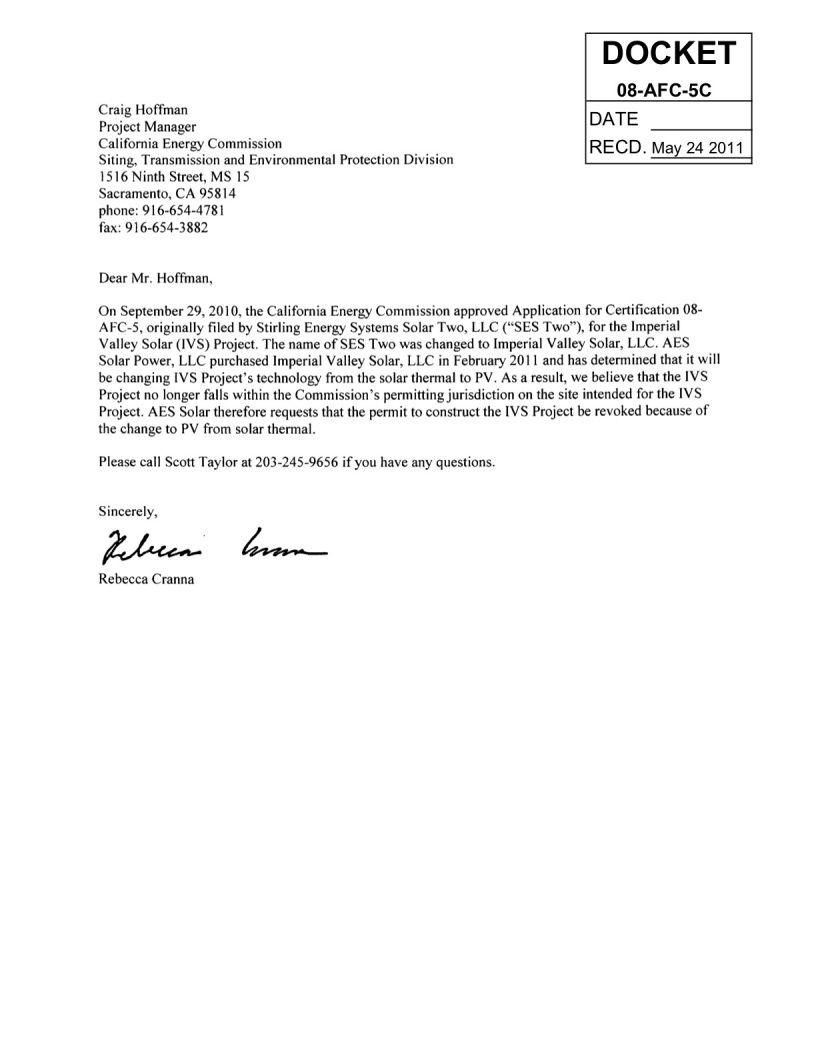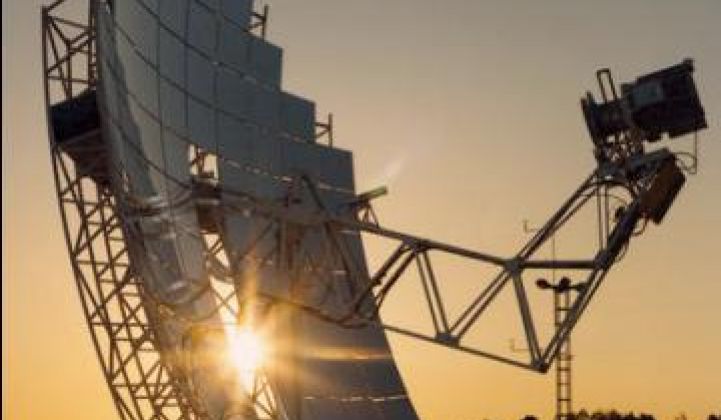Tessera Solar is/was the dedicated development arm for Stirling Energy Systems, a system manufacturer for dish-engine solar plants. Tessera had developed the Imperial Project, a 709-megawatt plant with a Power Purchase Agreement (PPA) from SDG&E for 300 MW utilizing Stirling Engine technology.
In February, Tessera Solar announced that AES Solar, a joint venture between AES and Riverstone Holdings, had acquired the Imperial Valley Solar Project. AES Solar intended to move the project forward to fulfill its obligations under the PPA.
But not as a CSP project.
The letter, reprinted below, makes it official that none of the Stirling Solar technology will remain as part of the PPA. It will all switch to PV.
This illustrates the challenge of bringing an innovative, new CSP solution to market when more bankable PV or CSP architectures like troughs or power towers are available. (GTM Research's recent CSP report delves into this issue in detail.)
The nail in the coffin was Tessera's inability to secure a loan guarantee like their CSP competitors BrightSource Energy, Abengoa, or Solar Reserve.
The overall state of the U.S. utility-scale solar market remains healthy. It is true that some CSP projects are being canceled or changed to PV, but there are also several CSP mega-projects that have secured financing and are now beginning construction (e.g., BrightSource's 392-megawatt Ivanpah project and Abengoa's 280-megawatt Solana project). Numerous utility-scale PV projects are also moving forward, too. There are over 13,000 megawatts of utility solar projects with signed PPAs (half are CSP, half are PV).
GTM Research forecasts the CSP market to grow from $3 billion in 2011 to over $10 billion by 2013. But beyond 2013, the situation is much less rosy. With 2011 installations slated to reach 472 megawatts and 2013 forecasted to exceed 2,000 megawatts, the first wave of global project commissionings brings optimism. However, this optimism will increasingly be mitigated by the competitive, long-term threat posed by solar PV, which continues to reduce its installed cost faster than CSP.
Several important questions remain.
- SCE actually terminated/canceled its PPA with Tessera/SES for the Calico project (which is now owned by K Road). Is there any chance SDG&E will follow suit and terminate the PPA it signed for Imperial Valley?
- The CPUC approved the PPA for Imperial when it was a solar thermal plant. Will that decision need to be revisited?
- The PPA was signed at a price that should have worked if SES could produce systems for $3/W-ac. If AES is going to use flat-plate PV at $4/W-ac ($3.40/W-dc), will the PPA price still work -- or will they need to ask SDG&E for a modification?
- Is there a chance that AES could end up using concentrating PV (CPV) for this project? SDG&E seems to have a lot of affection for CPV of late.
For more on CPV, tune into GTM Research's CPV webinar on Thursday at 1 pm ET.
And feel free to chime in if you have an answer to these questions.
Below is the letter, dated May 24, which moves the now-PV project out from the jurisdiction of the California Energy Commission (CEC).




